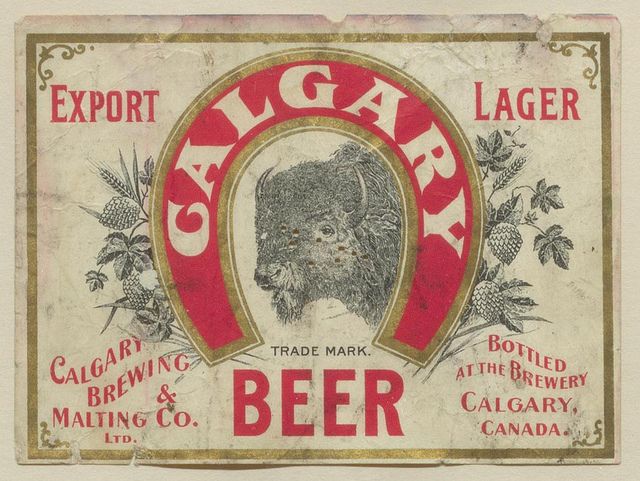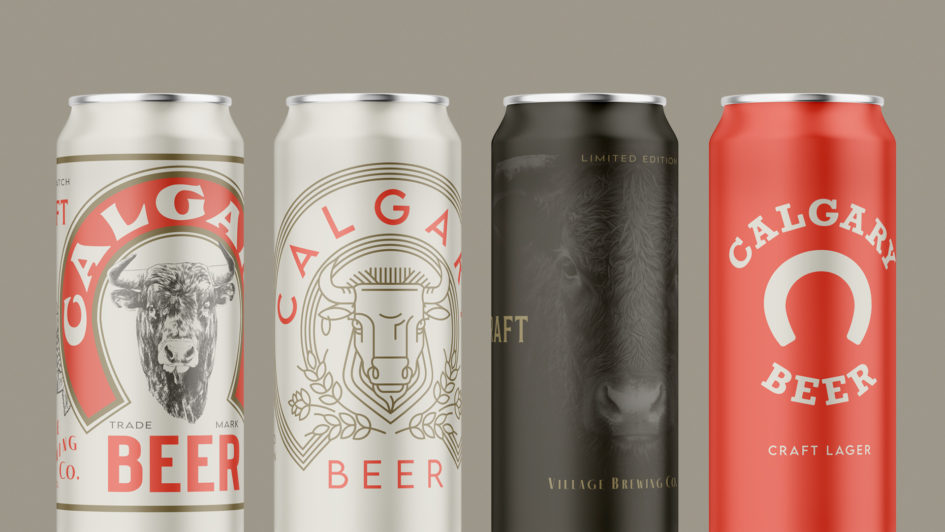Alberta’s first homegrown big beer brand was not Trad, or Drummond, or Uncle Ben’s, or even Lethbridge Pils or Bohemian Maid. It was Calgary Beer, formally known as Calgary Export Lager, which was first brewed in 1892. Alas Calgary Beer was killed off by Molson in 1994 during the years of frenzied corporate takeovers and consolidation. But it has risen again, sort of.
Village Brewing has worked out a partnership with Molson-Coors (who still own the trademark) to release a new take on Calgary Beer this summer. The new Calgary Beer is designed to link the past with Calgary’s (and Alberta’s) burgeoning craft beer present and future.
As a keen observer of the beer industry and an amateur historian the story of Calgary Beer has long fascinated me and I simply could not pass up an opportunity to dig into why and how Village has created a 21st century version of this iconic brand. I did a recent CBC beer column on the new beer, which you can listen to here.
But before we talk about Village, let’s take a step back. Calgary Beer deserves its iconic status in Alberta. It is the creation of Calgary Brewing and Malting which opened in 1892, making it one of Alberta’s earliest breweries. Calgary Brewing was the creation of A.E. Cross, a prominent rancher, politician and businessman best known for being one of the four founders of the Calgary Stampede. The brewery operated continuously (except for prohibition) and independently until the 1970s, when it was purchased by the Carling O’Keefe empire. When Carling was swallowed by Molson in 1989 it quickly became victim to their aggressive consolidation agenda. Molson shuttered the plant in 1994 and Calgary beer was no more.
Sorta. Oddly (and ironically) Molson continues to brew the Calgary Beer brand out of Vancouver exclusively for the Saskatchewan market, where it is mired in the “value” segment of low-price beer brewed with lots of adjuncts and less interest in flavour. Why Saskatchewanians get the privilege/curse of drinking the zombie version of Calgary Beer is beyond me.
Calgary Beer matters because of its longevity, its iconic buffalo and horseshoe label, and its unquestioned place in Alberta beer history. Even Edmontonians should recognize the significance of its return.
Enter Village, stage right. They found a way to talk Molson into lending them the brand for a summer 2021 reboot. They are a bit tight-lipped on how they they persuaded the notoriously insular Molson to play with others, simply saying “it has been on our radar for a long time”.

They also decided to re-imagine both the branding and the beer. For Village this project is about honouring Alberta’s beer past while showing the links to its present. “Calgary Beer is the origins of beer in Calgary”, says Village’s head of brewing operations, Jeremy McLaughlin. “The idea is to modernize and revitalize the brand for a new consumer”.
They have released four new can labels, each offering a different look and feel. One is an homage to the iconic label. One offers a lineal, minimalist take on that original label. The last two work with colour and varying degrees of boldness to offer a more modern look and feel.
As for the beer, it also is a re-creation. “We asked ourselves, if it was released for the first time today, what kind of brand would it be?”, asks McLaughlin. “We opted for a craft lager, dry-hopped. A more modern style that craft beer drinkers would be open to”. They wanted to keep the beer accessible and easy to appreciate but “we also wanted it interesting enough that diehards would try it”.
I tried the beer and it mostly lives up to its goals. It is a light-bodied, straightforward lager. It has a subtle grassy hoppiness interacting with a soft pilsner malt sweetness. The finish is sweeter than I would prefer and it could have a bit more bitterness to make it more interesting. But, overall it is an accessible craft lager, which was their goal. I am pretty sure this beer wasn’t designed for guys like me.
One of the things I most appreciate about the beer’s recipe is how it continues the historical/modern link. (Geek alert!) They use a Kveik strain on the beer. Kveik, for those who don’t know is an historic yeast family used by Norwegian farmers for hundreds of years. It had lingered in obscurity for generations until a few years ago and now is one of the biggest rages of the craft beer world. Second, the hops used in the beer – Ella, Sabro and Enigma – “all come from a hybridization program that takes historical varieties and breed them with new varieties to draw out new flavours”, McLaughlin points out. The malt bill is as simple as it gets, Rahr 2-row (another nice Alberta touch) and a bit of acidulated malt for water management purposes.
Alas, the new and improved Calgary Beer is only available this summer. Once the fall hits, it will be gone. Plus it is mostly only available in Calgary, so if you know anyone in Calgary get them to pick some up for you.
As for my requisite editorial comment, I kind of appreciate this project. I have always been grumpy that Molson has debased Calgary Export Lager the way that they have, knowing its historical roots. It is appropriate that its resurrection – however temporary – comes from a Calgary brewery with bona fide roots in Calgary and a passion for being a part of the community. That it is Village doing this seems completely appropriate and on brand.
It is an unfortunate reality that to make this happen they need to deal with the multinational that killed the brand in the first place. Maybe, just maybe, one day they can sweet-talk Molson into handing them the brand for good. And then Albertans can truly rejoice about the return of an Albertan icon.


August 27, 2021 at 9:46 AM
Before they cheapened these old brands with adjuncts and sugars, these old brands were quite good. You have to remember that we didn’t have the craft beers of today to compare them to.